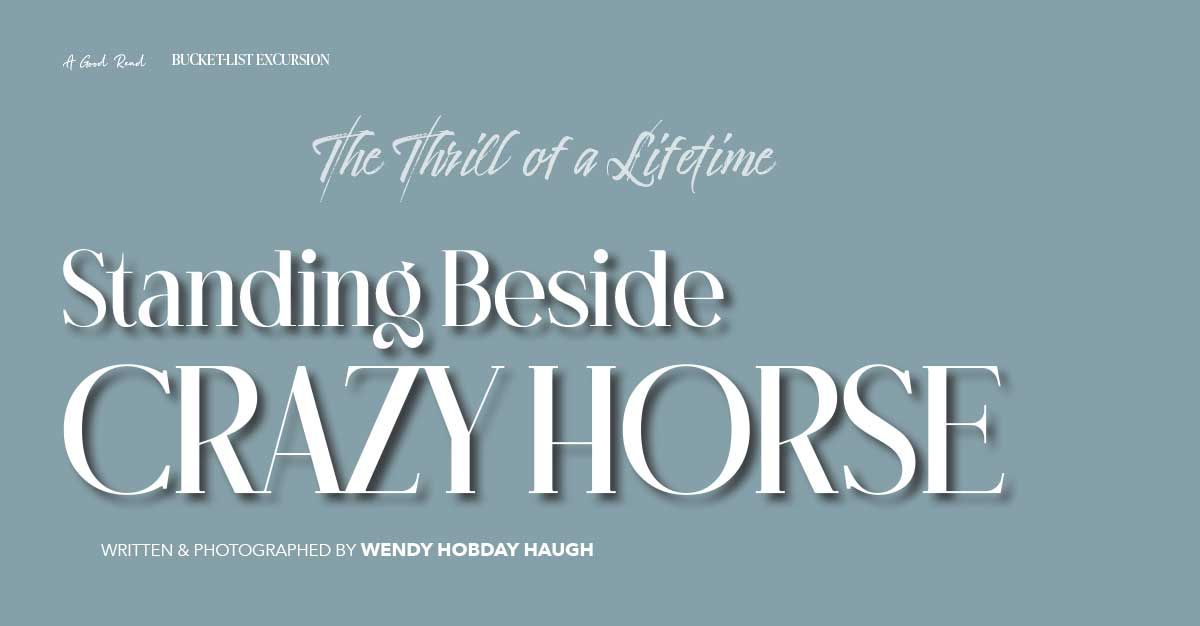
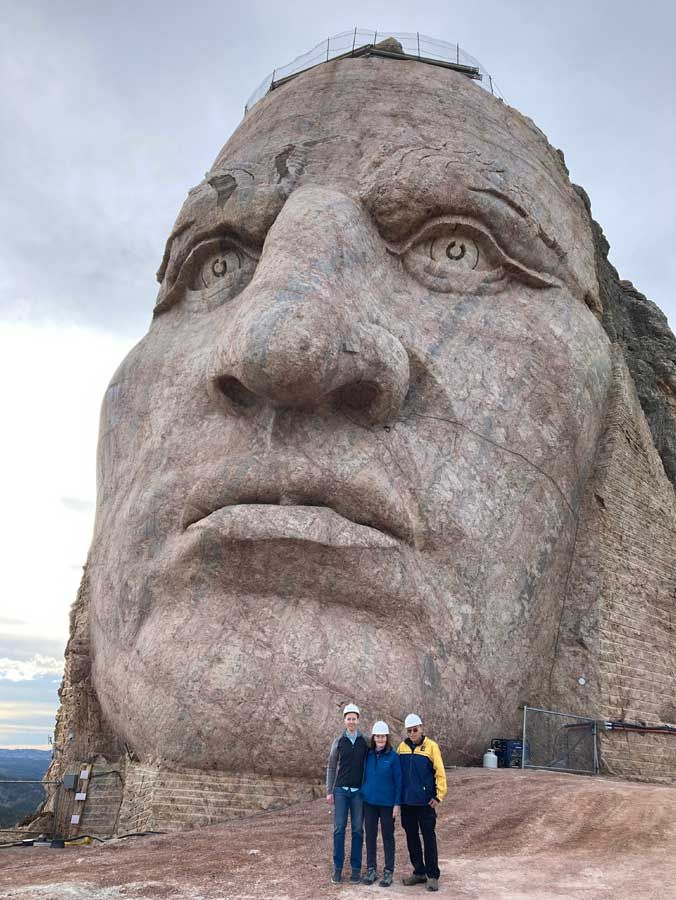
[From the 2025 Spring Magazine]
I was a young mother herding three active little boys when I first read about Korczak Ziolkowski (Kor-chock Jewel-kuff-ski), the sculptor who dedicated half his life to carving the Crazy Horse Memorial in South Dakota. Fascinated by the story of the late Polish-American pioneer, humanitarian, and world-renowned sculptor, I vowed to visit the Black Hills one day and see this amazing site for myself.
In 1939, Lakota Chief Henry Standing Bear and a group of Native American elders invited the Connecticut sculptor to carve a mountain memorial honoring their revered leader, Crazy Horse. They couldn’t offer Korczak any monetary compensation or equipment. Legally, they couldn’t even offer him the mountain they’d chosen overlooking the Black Hills, sacred lands of their people. Korczak would need to purchase the mountain and equipment, clear and create nearly six miles of rough road, build himself a home, and fashion 741 wooden steps from the base of the 600-foot mountain to its peak at 6,740 feet above sea level. All this in addition to designing, engineering, and transforming a mountain into a 3D sculpture of Crazy Horse mounted on his steed, pointing to the sacred lands “where (his) people lie buried.”
Korczak considered the intriguing request for years as he finished commissioned sculptures, enlisted in the Army, and served overseas in World War II. He finally accepted the challenge and moved to South Dakota on May 3, 1947. From the start, Korczak visualized the project as a non-profit humanitarian undertaking with three distinct goals: the carving of the mountain, the creation of a comprehensive museum honoring the history and traditions of Native Americans, and the creation of a University and Medical Training Center for Native American students. A firm believer in the merits of free enterprise, the sculptor steadfastly refused to accept any State or Federal funding, even years later when millions of dollars were offered.
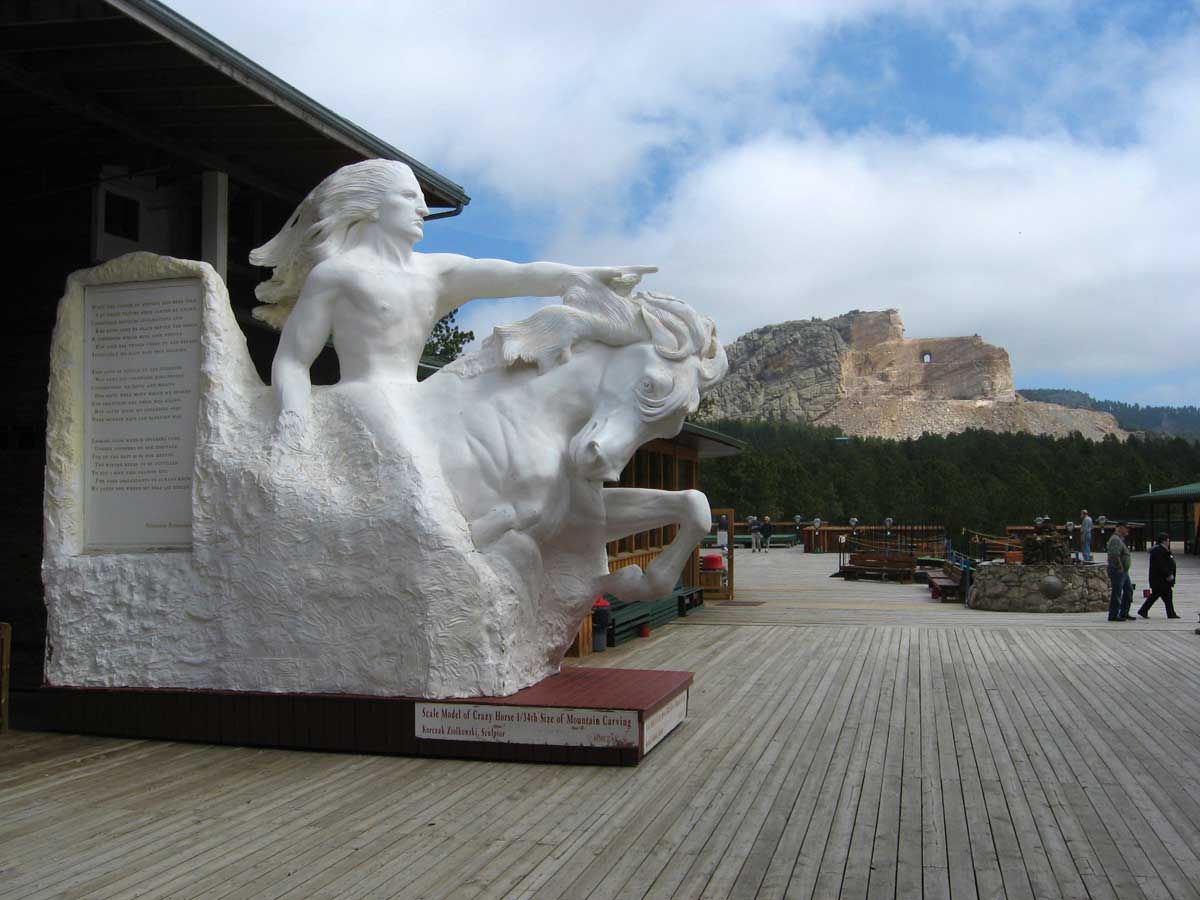
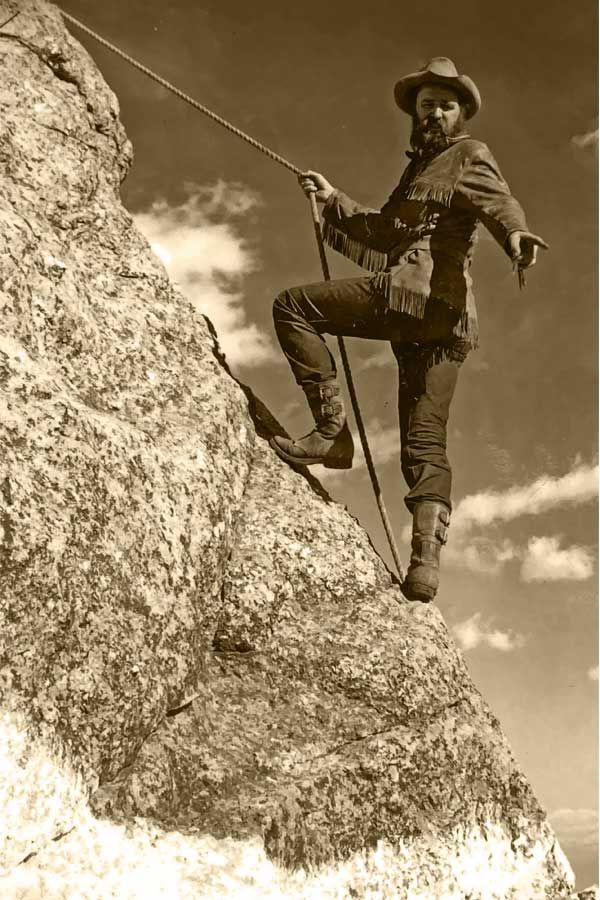
After two backbreaking years spent taming the land, finally—at age 40, with just $174 to his name—Korczak began work on the peak he’d christened Thunderhead Mountain. Knowing the project would never be completed in his lifetime, he also began penning three thick volumes detailing the sculpture’s long-range execution, a plan his family still follows today with some modifications.
Korczak encountered many obstacles during his 36 years on the mountain, but his commitment never wavered. “I would do it all over again,” he said. “The treatment of the American Indian is the blackest mark on the escutcheon of our nation’s history. By carving Crazy Horse, if I can give back to the Indian some of his pride and create the means to keep alive his culture and heritage, my life will have been worthwhile.” Having always considered himself “a storyteller in stone,” he felt the story of the Native American people was “truly an epic tale that needs telling.”
By the time of his death on October 20, 1982, the 74-year-old sculptor had constructed 61buildings on the property and chiseled and blasted away 7,200,000 tons of rock. He had also raised a family of 10 children with his wife and steadfast workmate, Ruth, built a dairy, hauled in an old one-room schoolhouse, and hired an onsite teacher for their kids.
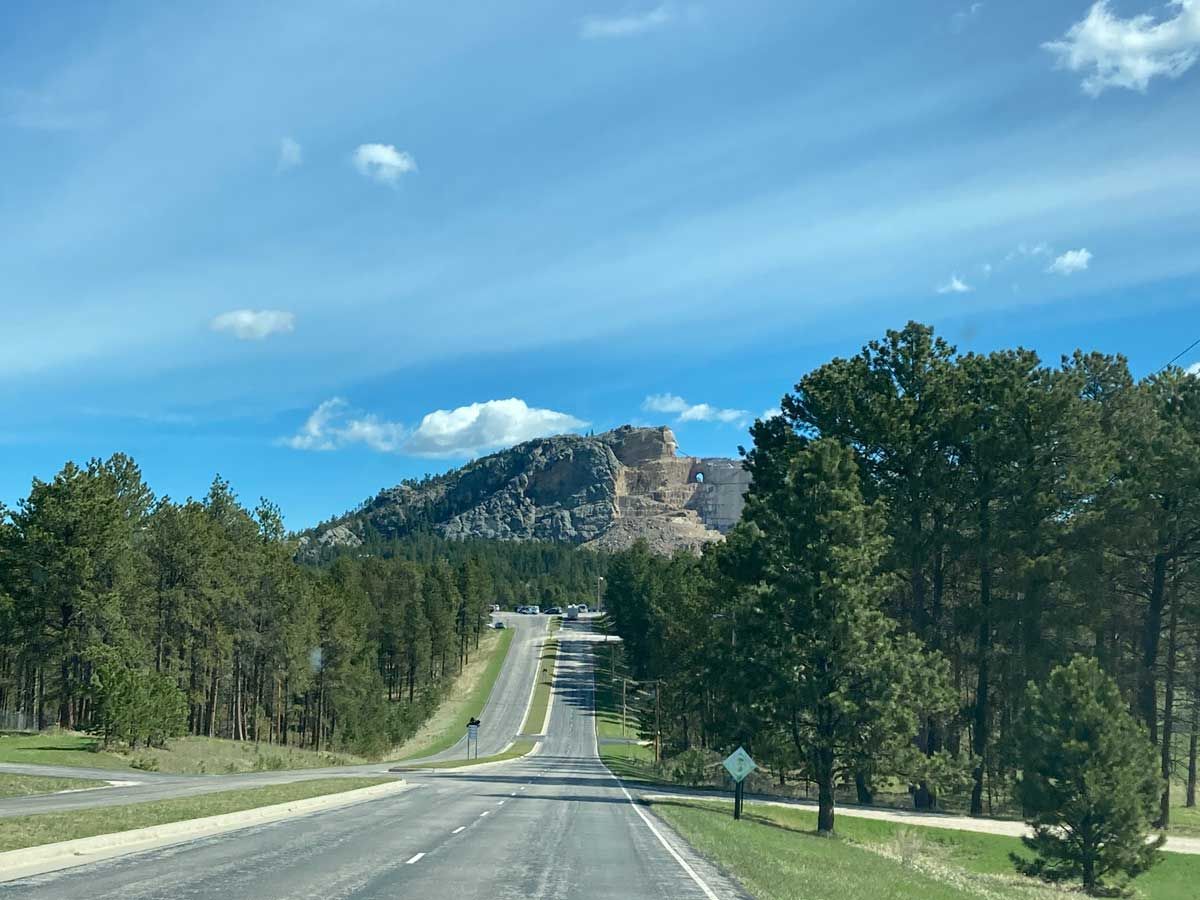
Drive
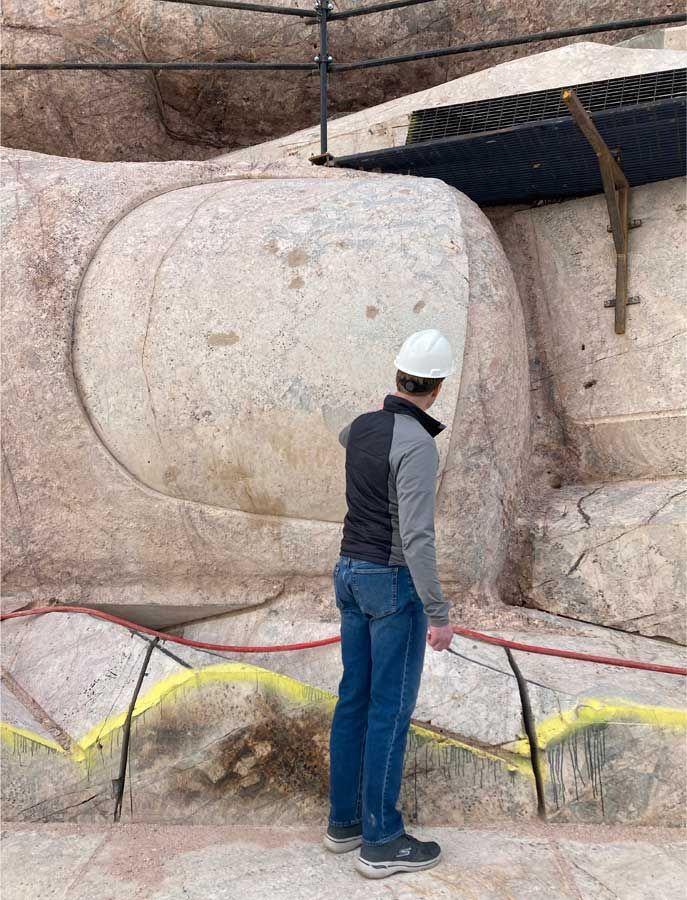
Toe
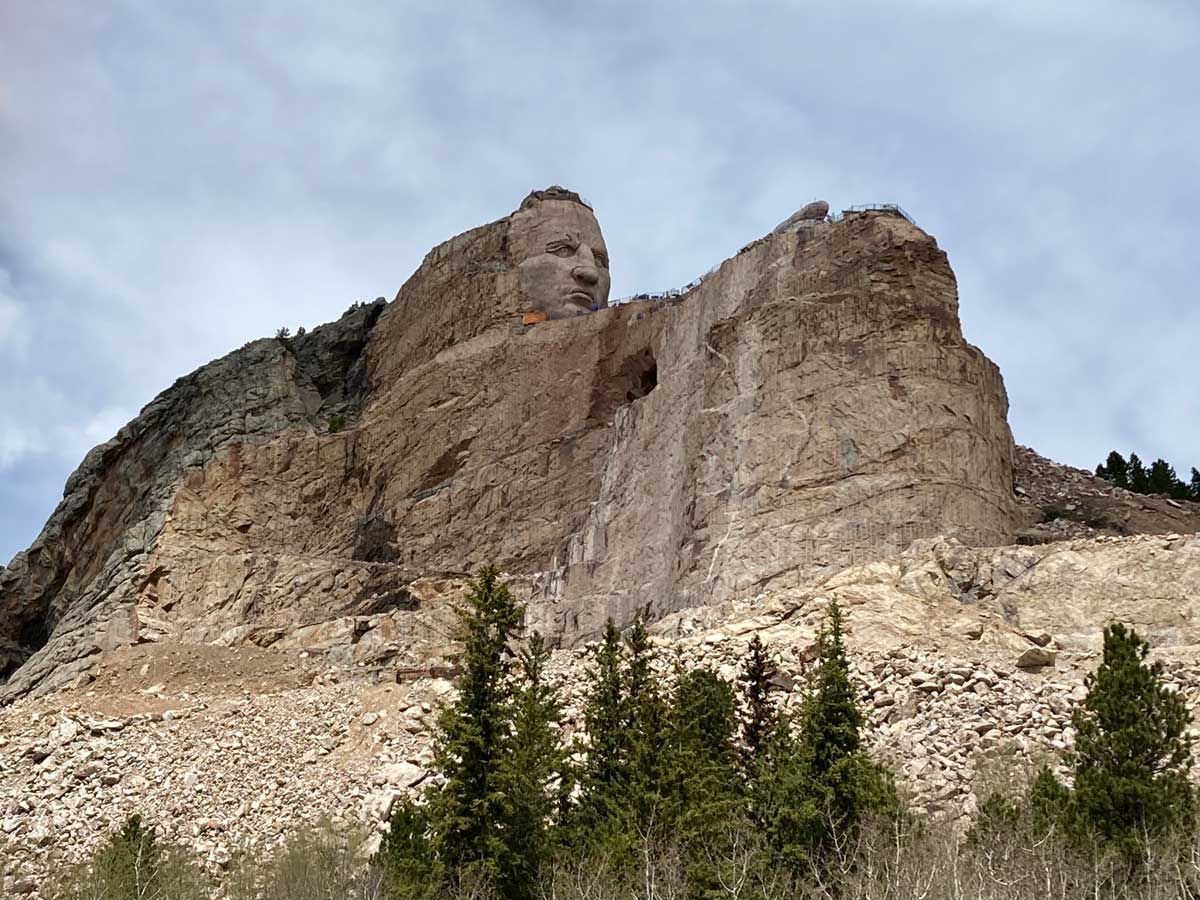
Moutain
After first learning about Crazy Horse in the mid-1980s, my desire to visit persisted for 25 years. Finally, in May of 2010, my husband, Chuck, and I spent an extraordinary day with relatives perusing the museums, touring Korczak’s rustic log home and studio, and admiring his many stone and wood carvings. Later that day, I was thrilled to learn that, for an additional charge, we could visit the top of the mountain and see the sculpture up close. Exhausted from an already full day, we vowed to return later in the week. But somehow, with so many other amazing South Dakota sights to see, we never made it back.
Dogged by regret, the urge to stand on that mountaintop persisted until May of 2024 when, at the suggestion of our eldest son, Henry, the three of us traveled to South Dakota. I will never forget the glorious evening we spent standing beside Crazy Horse as daylight eased and cool breezes whispered around us. Awed by the majestic sculpture and the sweeping mountaintop vistas, I couldn’t help but think about the extraordinary man who had embraced the bonds of brotherhood and labored faithfully, year after year, to honor a noble people.
Inevitably, visitors ask when Crazy Horse will be completed, often comparing it to nearby Mt. Rushmore which was carved in 14 years. But Korczak’s grandson, Caleb Ziolkowski, who works on the mountain, points out that the scale of the two sculptures differs dramatically. Mt. Rushmore was carved in high-relief, the presidential busts only partially protruding from stone, whereas Crazy Horse will be a massive 3D sculpture depicting a warrior astride his horse. In fact, all four presidential heads could fit inside Crazy Horse’s 90-foot-tall head. Additionally, Mt. Rushmore’s 10,000 square feet of rock were carved at a rate of 714 square feet per year. Yet if Crazy Horse proceeded at that lowly pace, the sculpture would take 404 years to complete!
“We’re moving about seven times as fast as they were moving at Mt. Rushmore,” Caleb explains. “I can’t guarantee when the memorial is going to be done, but I can guarantee that people are not going to be disappointed in the progress they see going forward.”
Opportunities to stand beside Crazy Horse on Thunderhead Mountain are dwindling fast. If predictions hold, within another five to eight years the sculpture will be too far along to allow any more topside visitors. As I stood there last May, savoring the mountain’s mystical aura, I couldn’t help but think... maybe, just maybe, we’ll return one more time.
To learn more, visit crazyhorsememorial.org.